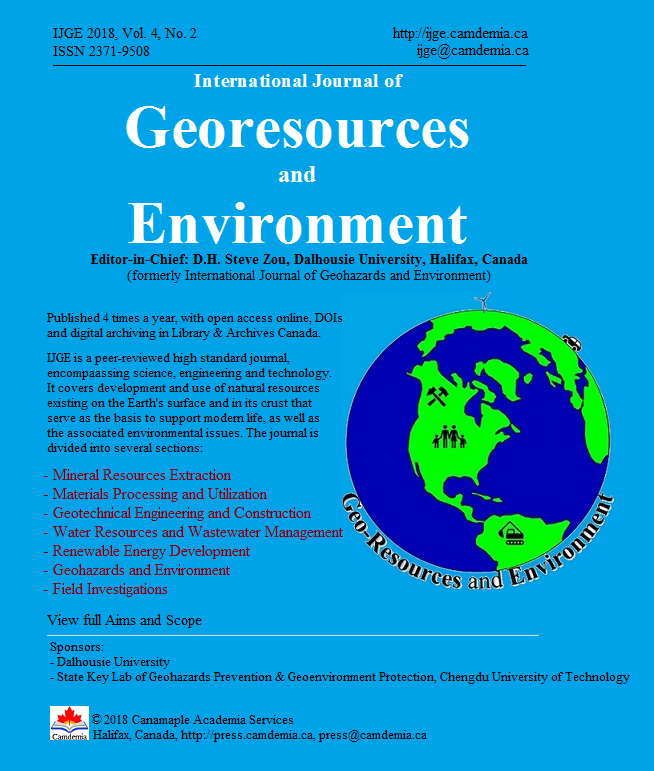Atmospheric Corrosion Behavior of Mild Steel in the Initial Stage under Different Relative Humidity
DOI:
https://doi.org/10.15273/ijge.2018.02.006Keywords:
mild steel, relative humidity, atmospheric corrosion, mass gain, corrosion characteristics, initial stageAbstract
The corrosion behaviour of mild steel in the initial stage was studied in simulated pollutant-free atmosphere with relative humidity (RH) of 65%, 75% and 95%. The mass gain has a positive linear relationship with the exposure time. It increases significantly with the increase of relative humidity. The initiation and propagation of corrosion in the initial stage have a feature of filiform corrosion. An aeration cell is formed in a water droplet. Fe is dissolved to form Fe2+ in the center of the cell, and O2 is reduced to produce OH- at the edge of droplet. They move toward each other and react to form Fe(OH)2. At this site, corrosion continues to generate cellular corrosion products. Some Fe2+ species flow forward to form a new active site as an anode. The old site acts as a cathode. The small anode-big cathode promotes the development of filaments. In case of high relative humidity, the corrosion is accelerated. The width of filaments and the growth rate of cellular corrosion products increase. Under RH65%, the dominant corrosion products are α-FeOOH and γ-FeOOH; while under RH75% and 95%, the corrosion products are mainly composed of γ-FeOOH, α-FeOOH, γ-Fe2O3 and Fe3O4.
Downloads
Issue
Section
License
Copyright, Terms and Conditions
The International Journal of Geohazards and Environment (the Journal) is published by Canamaple Academia Services (the Publisher) online with open access, under a Creative Commons Attribution-Noncommercial license (CC-BY-NC) (http://creativecommons.org/licenses/by-nc/4.0/). Authors (the Authors) submitting papers (the Work) for publication in the Journal automatically agree to the following terms and conditions.
1. Under the license (CC-BY-NC), Authors give permission for others to share and reuse the Work, as long as the original source and author(s) are properly cited (i.e. a complete bibliographic citation and link to the Journal website) and the material is not used for commercial purposes. Any sharing or reuse must however indicate the original CC-BY-NC license terms of the work.
2. Authors transfer and assign to the Publisher all copyright in and to the Work. However Authors retain all proprietary rights except the copyright, related to the Work and also retain the rights a) to use, reproduce, distribute, and publicly display the Work in any medium in connection with the Authors‘ academic and professional activities, such as teaching, presentations and lectures, b) to create derivative works from the Work and to make full use of the Work in future research and publications, c) to authorize others to make any non-commercial use of the Work, d) to make both the pre-published and final-published versions available online in institutional and/or disciplinary repositories or on their own websites with a citation and link to the original paper published in the Journal.
3. Authors warrant that the Work is their original work, it is not copied from anywhere or anyone else, they are totally responsible for the authenticity, originality, validity and accuracy, and the facts and views are their own, that the Work contains no matter which is defamatory or infringes any literary or proprietary rights, intellectual property rights, or any rights of privacy, and that the Work has not been simultaneously submitted to any other journals or publishers. Authors further agree that their manuscripts whether accepted or rejected will not be returned and the rejected manuscripts will be disposed at the journal editor's discretion.
Disclaimer: The Publisher, the Journal and the editors accept no responsibility for statements or opinions expressed by authors. Use of information and materials in the Journal is the sole responsibility of users.


